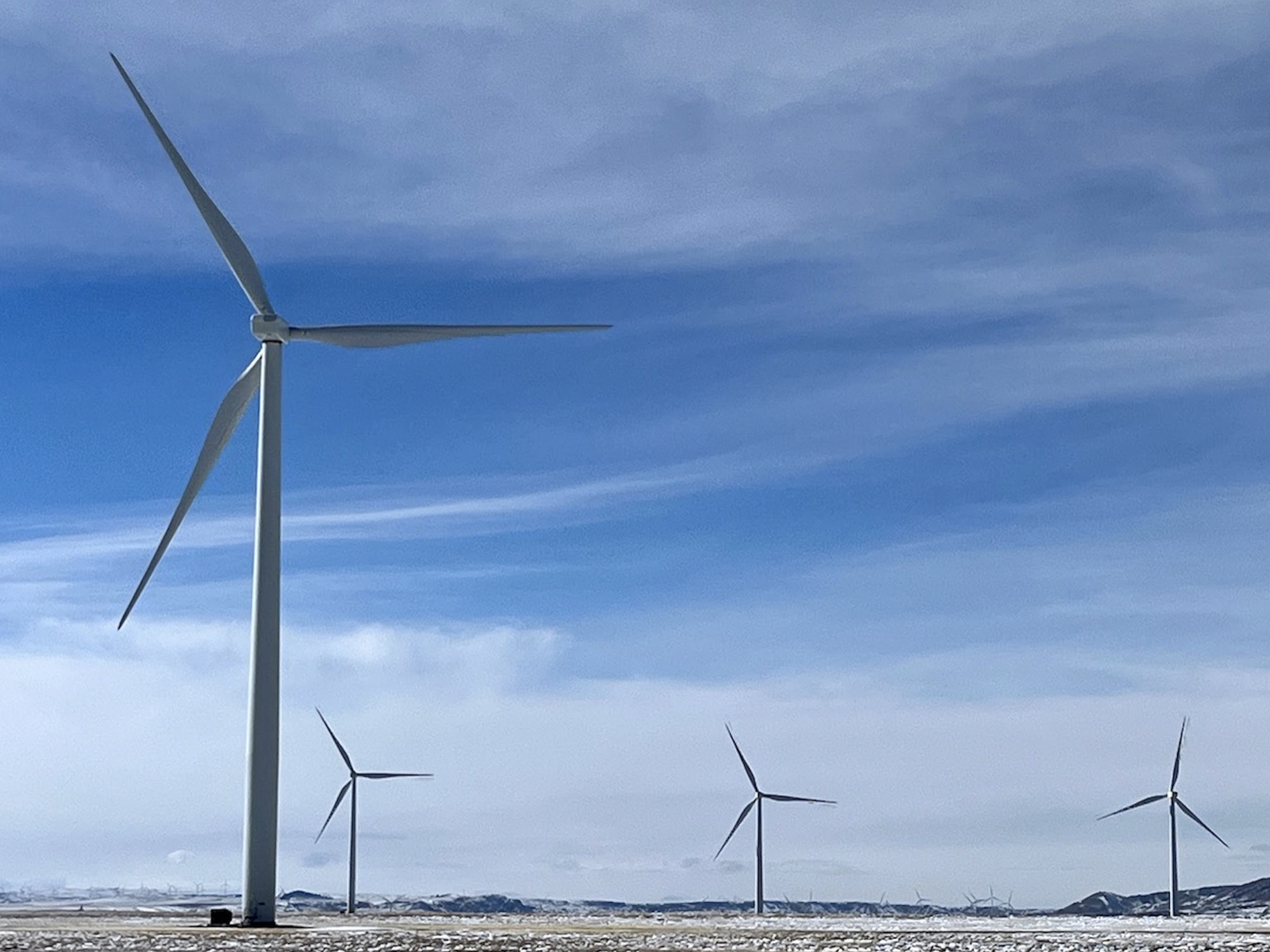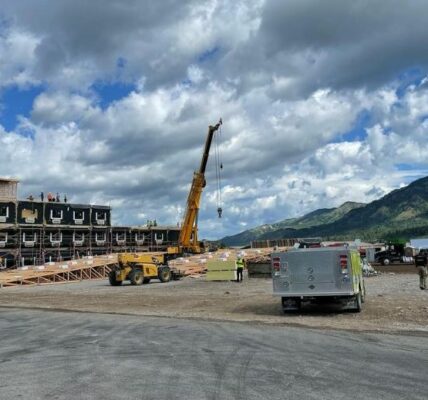
• What does the trend mean for Wyoming?
By Zak Sonntag
Casper Star-Tribune
Via- Wyoming News Exchange
CASPER — When energy prices spiked in 2022 following extreme weather events and market disruptions from the Russia-Ukraine war, wind turbines saved rate payers as much as $85 million on their electricity bills, according to figures from Rocky Mountain Power, Wyoming’s largest utility.
The revelation resulted in billowing calls for the expansion of renewables.
Meanwhile, the wind itself was showing less gusto. Wind energy production across the U.S. in 2023 — for the first time in years — declined, according to new data from the Energy Information Administration (EIA).
The fall off — though modest nationwide with an overall slip of less than 1% — came despite a small uptick in overall wind generation capacity.
In Wyoming, however, the decline was steep, with a loss of 9.2% over the calendar year. The wane highlights the central concern with renewables —reliability — while underscoring the importance of expanding battery storage and keeping dispatchable sources on the grid.
But it also takes place against a backdrop of widespread swings across the energy sector — which last year saw double-digit shifts across a variety of electricity inputs — calling attention to a uniquely transitional moment in the broader world of energy and the precarious demand dynamics in an era of climate uncertainty.
Yet as the news may deflate the sails of wind advocates, experts say the decline is nothing to worry about — yet.
“There are some years that are going to get less wind and some years that you’re going to get more. The wind is variable. It’s not automatic. It varies with climate, and these larger meteorological events, like El Niño, have an impact. So just like some years are rainier, some years are windier,” Jeremy Firestone, professor at the School of Marine Science and Policy at the University of Delaware, told the Star-Tribune.
Beyond meteorological oscillations, wind energy is facing supply chain and policy impediments too.
Though the U.S. saw new wind turbines come online in 2023, the additions were minimal compared to previous years, an indication of non-weather-related headwinds.
Economists with energy analytics firm Wood Mackenzie in December downgraded expectations for global wind output in the coming decade, citing increased permitting restrictions in China along with abandoned power purchase agreements in the U.S. largely due to delays in offshore wind projects.
“The combination of supply chain disruptions and inflation changes the project economics, so some people are going to delay installations. They’re delaying borrowing large amounts of money until credit is flowing more easily and supply chain kinks are worked out,” said Firestone.
Firestone added that part of the slowdown in new capacity relates to lack of consensus among industry advocates regarding the best way to build out the sector, with priorities divided between technological emphasis and industrial emphasis.
“Part of the problem is that the technology has evolved quite a bit over a short period of time, so there’s a debate going on: should we continue to upscale and upsize turbines? Or should we focus more on industrialization and lowering costs that way?” Firestone said, adding that he personally leans toward industrialization.
The production drop in 2023 was not limited to wind. In fact, the same weather variables that minimized wind generation also reduced overall electricity needs, as moderate winter conditions eased demand. In the U.S., overall electricity generation fell by 3.6% in the same period.
Some energy markets were hit harder than others.
Coal used in electricity generation, for instance, fell by more than 23% from 2022 to 2023; hydroelectric output was down 6% as a result of continued drought conditions across the West; even nuclear power fell by half a percent, reflecting diminished demand.
The dramatic drop in coal consumption, which hit coffers in Wyoming, the nation’s largest coal producer, largely reflects the increasingly competitive market for natural gas, whose production and storage levels have vaulted over the past 18 months.
Solar power, too, is chipping away at the market for fossil fuels, and saw a bright 30% leap in production in 2023.
For all these reasons, experts say more focus should be given to transmission systems.
Though production swings have vexed markets, investors and policy makers, energy specialists warn against focusing too narrowly on the drawbacks of intermittency, and instead argue for viewing them as comparative advantages able to add value under the right transmission system conditions.
“The key is designing a system that’s resilient,” said Jonathan Naughton, director of the Wind Energy Research Center at the University of Wyoming. “Bringing more renewable energy online is about transmission capability, moving power around, and trading electricity back and forth.”
Naughton cites the utility MidAmerican Energy company, which derives the majority of its annual megawatts from wind, enabled by a sophisticated and interconnected transmission system.
The weak year in wind will also diminish state revenue.
Wyoming’s wind tax — which charges producers $1 per megawatt hour — yields between $4 and $5 million annually, according to Bret Fanning, administrator with the Wyoming Department of Revenue.
Wind returns for 2023 have not yet been calculated, but the state is likely to see a loss of around $500,000 in revenue from the generation decline in 2023.
In the end, the weak year in wind is not yet raising flags with specialists.
“We’re expecting this to be a bounce back year in wind,” Firestone said.






